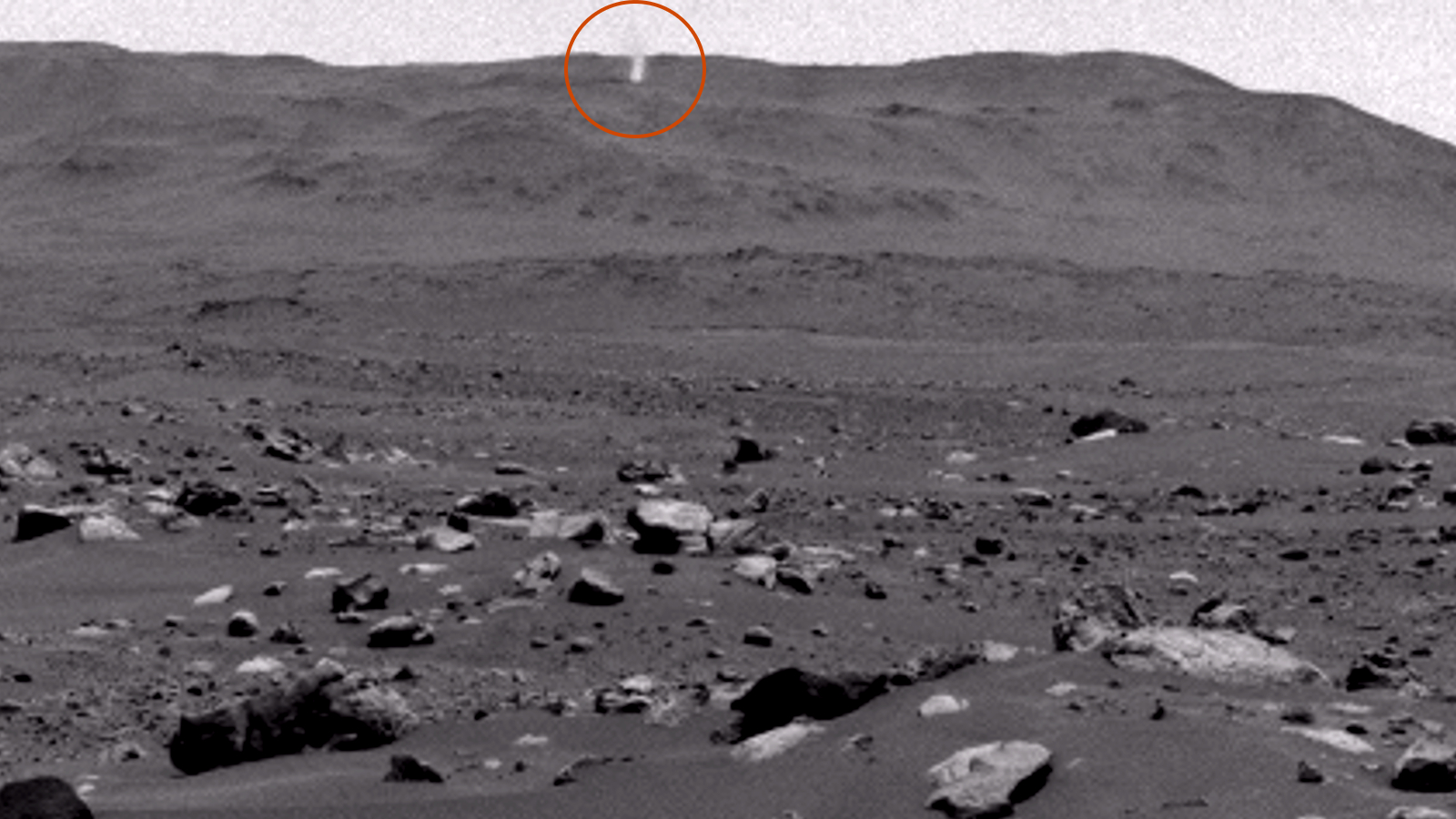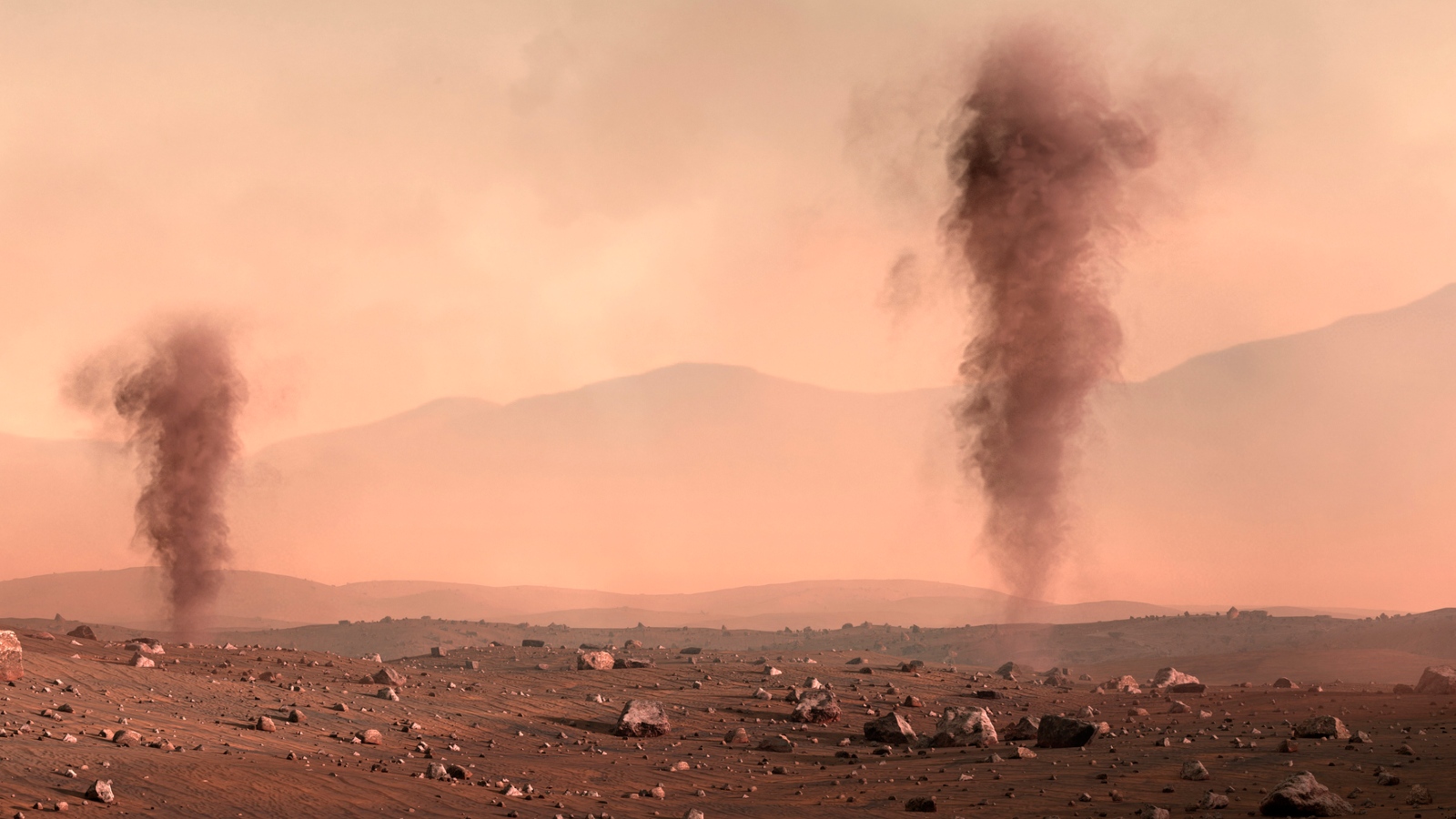Massive Martian 'dust devil' filmed by NASA's Perseverance rover is 5 times taller than the Empire State Building
The Perseverance rover has captured footage of an unusually large twister, or "dust devil," moving across the Martian landscape. Based on images of the swirling storm, researchers estimate that it could be more than a mile tall.
NASA's Perseverance rover has captured rare footage of a towering twister, or "dust devil," dancing across the surface of Mars. The dusty vortex is taller than the average-size U.S. tornado and five times taller than the Empire State Building, according to NASA.
The rover spotted the swirling storm on Aug. 30 on the 899th Sol, or Martian day, of its mission on the Red Planet. The wandering robot filmed the dust devil for around 84 seconds as it raged on top of a nearby ridge around 2.5 miles (4 kilometers) away. A time-lapse of the dust devil, showcasing the action at 20 times speed, was shared online by NASA's Jet Propulsion Lab (JPL) on Sept. 29.
The towering twister was moving at around 12 mph (19 km/h) and was roughly 200 feet (61 meters) wide. It reached a max height of 387 feet (118 m) in the video, but the top part of the storm has been cut off, meaning its true height is unknown. However, the researchers estimate that it was exceedingly tall.
"We don’t see the top of the dust devil, but the shadow it throws gives us a good indication of its height," Mark Lemmon, a planetary scientist at the Space Science Institute in Boulder, Colorado, and a member of the Perseverance science team, said in a statement. "Most are vertical columns. If this dust devil were configured that way, its shadow would indicate it is about 1.2 miles [2 km] in height."
Related: Mars rover is spying on the sun's far side to hunt for hidden, dangerous sunspots
Dust devils form when rising cells of warm air mix with descending columns of cooler air. They also form on Earth, particularly in dry and dusty places like Arizona, and typically range from between 10 and 300 feet (3 and 91 m) wide and 500 to 1,000 feet (152 and 305 m) tall, according to the National Weather Service.
In general, Martian dust devils are weaker and shorter than the dusty vortexes found on Earth, according to the statement. But clearly, the recently filmed whirlwind was much taller. Based on the researchers' estimate, the vortex was taller than average fully-fledged U.S. tornados, which grow to between 1,640 to 4,920 feet (500 and 1,500 m), according to FOX Weather.
Get the world’s most fascinating discoveries delivered straight to your inbox.
It is unclear why this particular dust devil was so tall. But unlike an Earth tornado, which can only grow as tall as the clouds above it, there is nothing impeding the height of a Martian dust devil.
Related: NASA's Perseverance rover loses its hitchhiking 'pet rock' after more than a year together on Mars
In a 2018 study published in the journal Icarus, researchers estimated that on any given day there could be at least one dust devil per square kilometer on Mars, which equates to around 145 million a day. As a result, dust devils are likely the main transporter of dust across Mars.
Because of how dust devils reshape the Martian environment, both the Perseverance and Curiosity rovers are constantly on the lookout for nearby twisters. So far, Perseverance has witnessed dozens of dust devils, according to Live Science's sister site Space.com.
In 2021, for the first time ever, researchers recorded the sound of a dust devil that passed directly over Perseverance. This enabled the rover to track how particles move within the vortex and provided clues as to how they form and grow.
The dust devil is not the only unusual extraterrestrial twister that was caught on camera this year. In March, an enormous "solar tornado," that stood taller than 14 Earths, raged on the sun's surface for more than three days after a plume of plasma got caught in a rapidly rotating magnetic field.

Harry is a U.K.-based senior staff writer at Live Science. He studied marine biology at the University of Exeter before training to become a journalist. He covers a wide range of topics including space exploration, planetary science, space weather, climate change, animal behavior and paleontology. His recent work on the solar maximum won "best space submission" at the 2024 Aerospace Media Awards and was shortlisted in the "top scoop" category at the NCTJ Awards for Excellence in 2023. He also writes Live Science's weekly Earth from space series.





